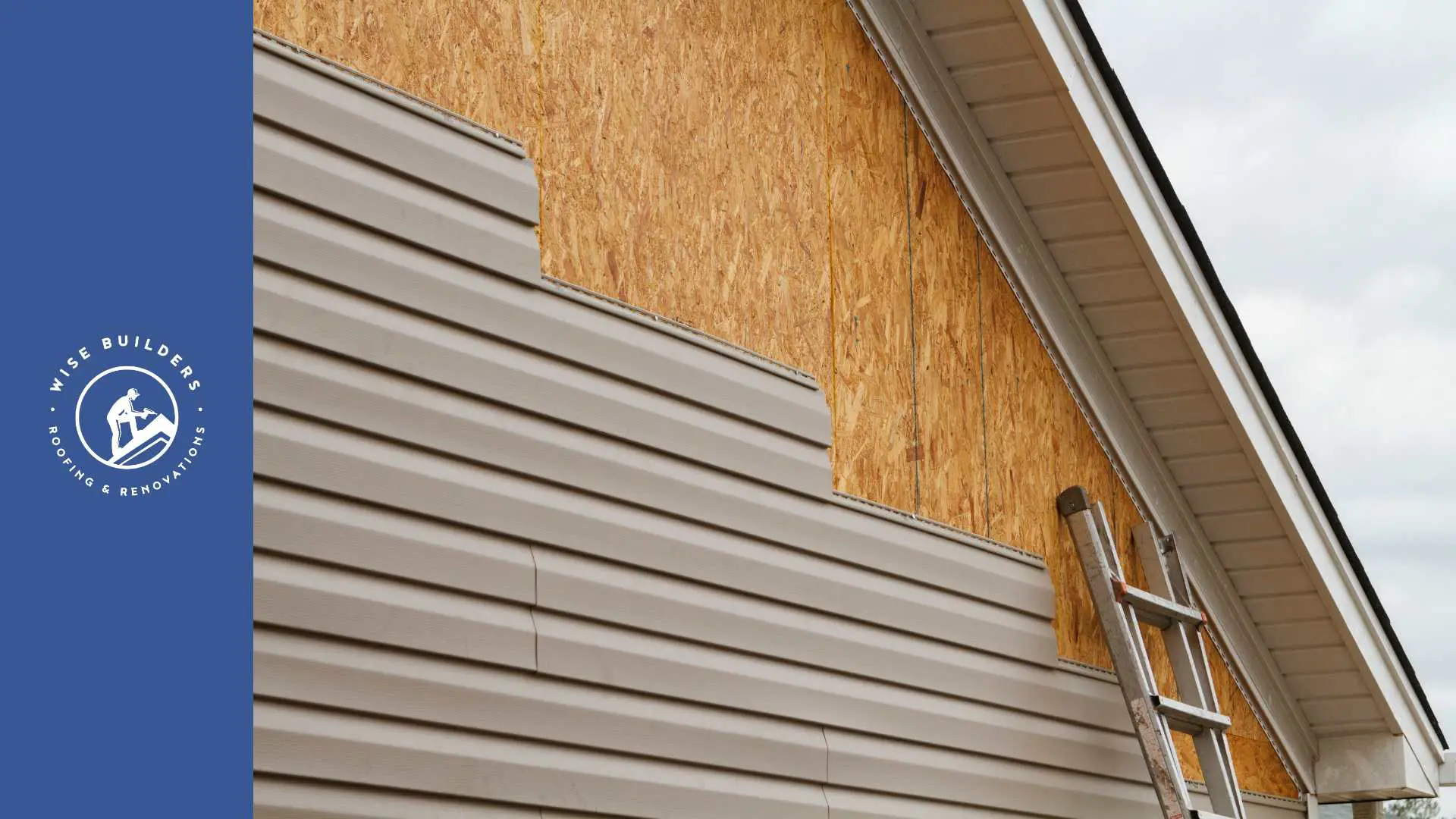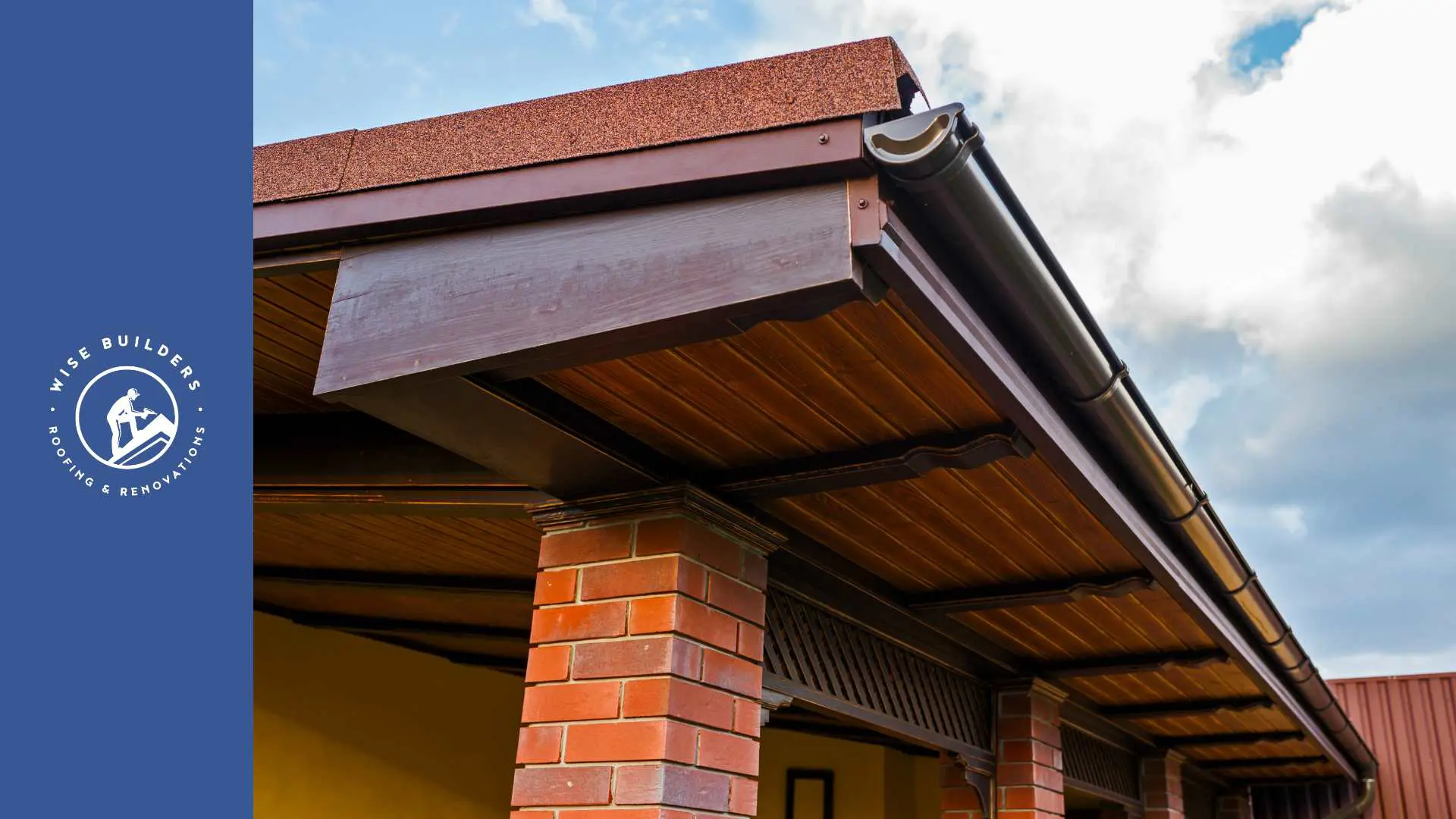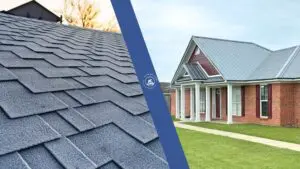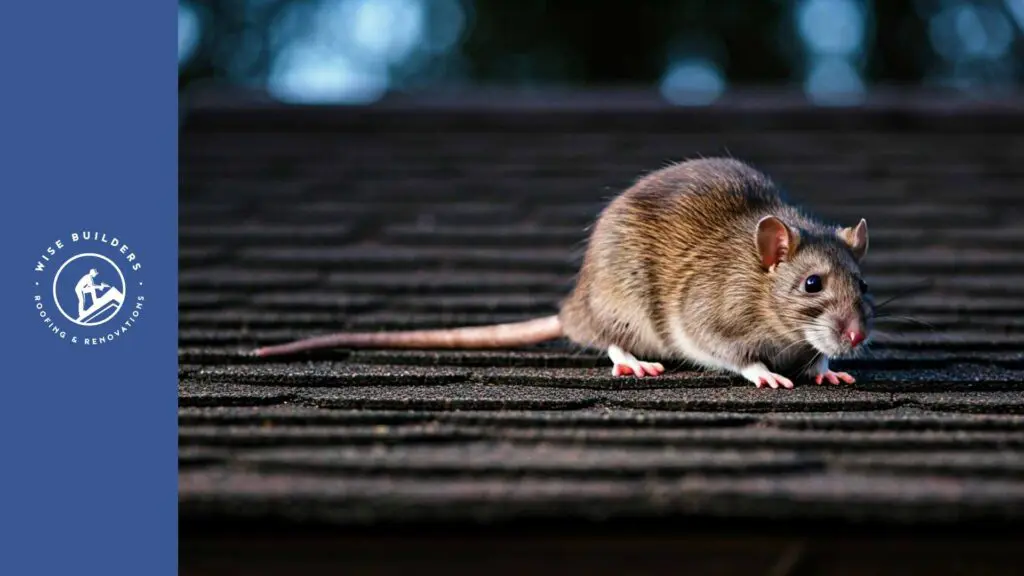
Key Highlights
- Roof rats, known scientifically as Rattus rattus, are agile rodent species that thrive in high places and cause serious infestations across the United States.
- Signs of roof rat infestations include droppings, greasy rub marks, noisy activity at night, and gnawed food packaging or structural materials.
- These pests pose health hazards like salmonellosis, rat-bite fever, and bubonic plague due to their droppings, bites, and fleas.
- Structural damage caused by roof rats includes chewing electrical wires, damaging wooden structures, and disrupting building foundations.
- Effective solutions for controlling and preventing roof rats involve sealing entry points, maintaining cleanliness, and using professional pest control services like Wise Builders Roofing and Renovations.
Let’s dive into the details about these pesky invaders, what attracts them, and how you can safeguard your home.
Introduction
Roof rats, a common rodent species in the United States, are destructive pests known for nesting in high places such as attics and roofs. Scientifically called Rattus rattus, these rodents have sharp senses that enable them to thrive in various home environments. Their ability to squeeze into small gaps and climb tree branches or power lines makes them particularly hard to eliminate. Understanding more about these rodents will help you detect infestations quickly and take steps to protect your property and health.
Understanding Roof Rats
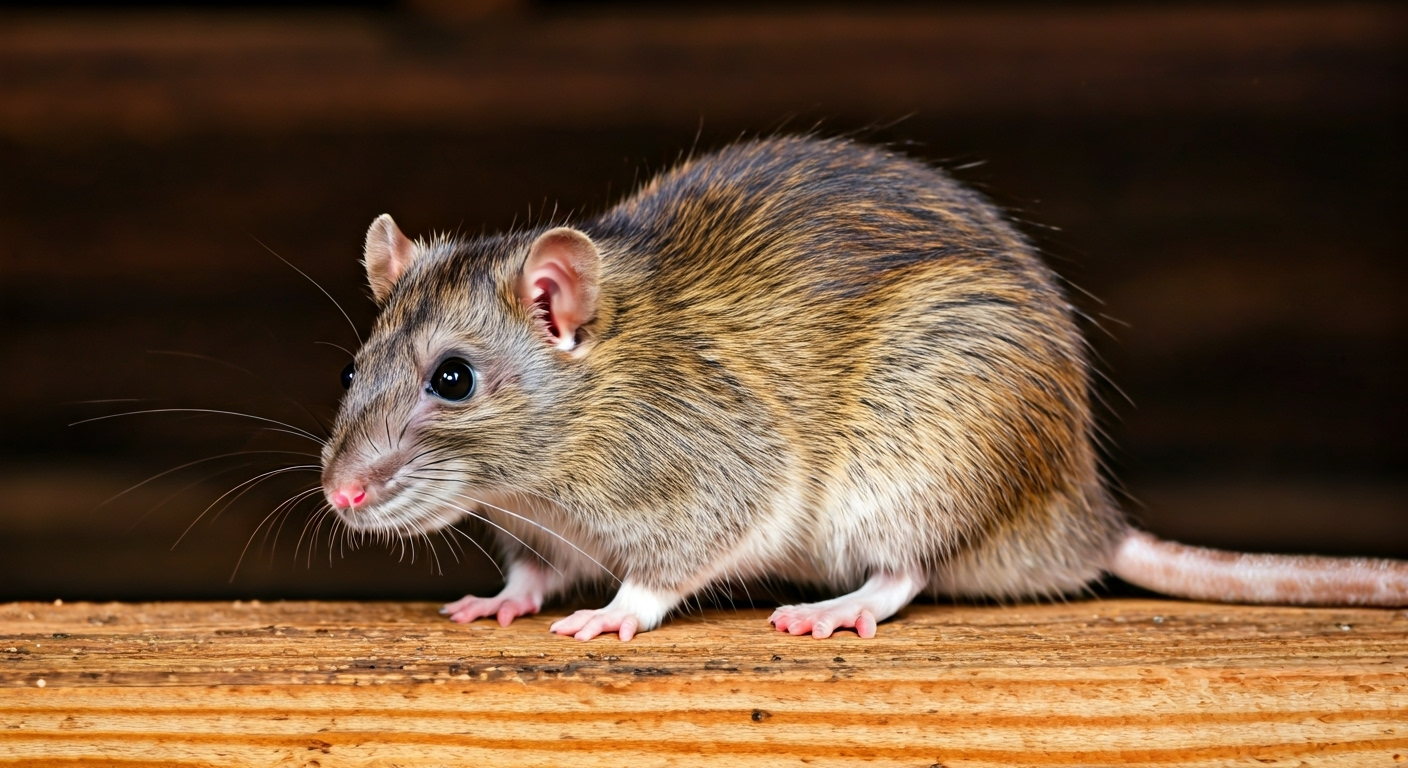
Roof rats, often referred to as Rattus rattus, are intriguing yet problematic rodents. They are smaller in size compared to Norway rats but are highly adept climbers, often invading homes by scaling walls, trees, or even wires. Their wide-ranging diet and ability to breed rapidly contribute to their persistence in residential areas.
These rodents are nocturnal by nature, making them active primarily during the evening hours. Roof rats are experts at hiding and creating nests in attics or roof cavities, posing unique challenges to homeowners.
What Are Roof Rats and How Are They Different from Other Rodents?
Roof rats, scientifically named Rattus rattus and commonly known as black rats or ship rats, are lean, smooth-furred rodents with long tails. Unlike Norway rats, which are bulkier and prefer lower ground, roof rats favour elevated areas such as attics, rafters, and tree branches. Their sleek bodies and sharp senses make them highly adaptable to climbing and moving across wires and ledges.
While house mice are much smaller and pose fewer structural risks, roof rats can grow up to 40 cm or more in length, including their tails. Norway rats, on the other hand, are larger and cause similar damage but are less agile climbers than roof rats. Identifying these differences is crucial for homeowners to target the correct rodent species during pest control efforts.
These distinctions become vital, especially in tropical and subtropical environments where roof rat populations thrive.
Where Do Roof Rats Live and Nest in Homes?
Roof rats are notorious for nesting in elevated locations. Commonly, their nests are found in attic insulation, roof beams, and shallow burrows outdoors. These agile pests also hide in tree branches, a favourite spot that gives them access to your roof from above.
Inside homes, storage boxes in garages, wall cavities, and piles of rubbish often serve as nesting grounds for roof rats. Their high adaptability allows them to make use of any secluded space close to food sources and water.
Their nesting behaviour poses numerous risks, creating significant health and structural hazards. Detecting these nests early in attics, rafters, and garages is key to preventing infestations from worsening. The next section highlights how to identify these intruders effectively and spot tell-tale signs of their activity.
Identifying Roof Rat Infestations
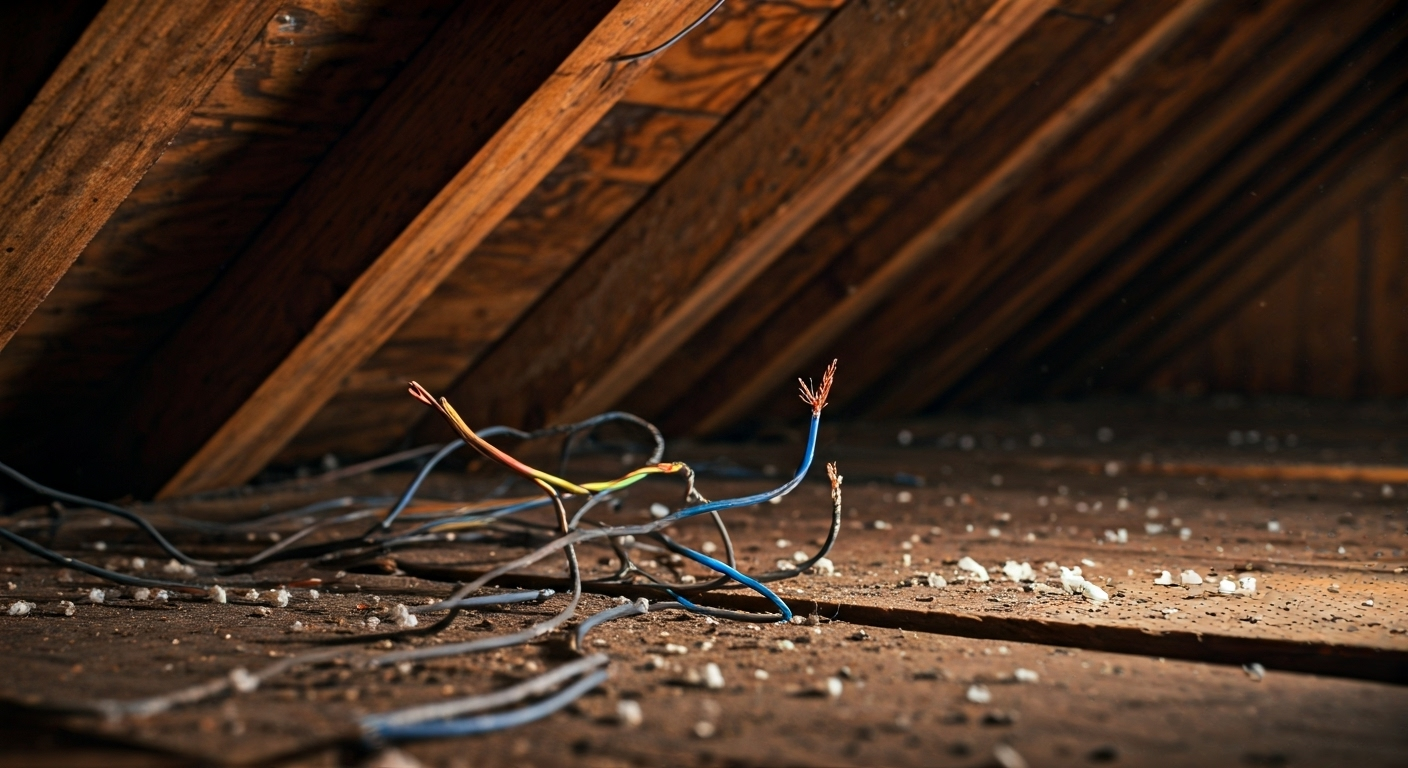
Roof rat infestations can swiftly grow unnoticed if early signs are not addressed. Droppings with pointed ends, greasy rub marks along travel paths, and gnawed food packaging are the most common indications of their presence.
Homeowners should listen for scratching noises during dusk and night, as these nocturnal pests are most active during those hours. By recognising these signs quickly, you can prevent structural damage and the serious health risks tied to pest infestations. Next, we’ll discuss the specific signs to look for in your home.
Common Signs of Roof Rats in Your Home
Roof rats leave behind several telltale signs that indicate their presence. These signs include:
- Roof rat droppings: Small, pointed droppings that differ from capsule-shaped ones left by Norway rats.
- Greasy rub marks: Oily stains on walls or roof edges caused by their fur brushing surfaces.
- Urine trails: Yellowish stains detectable near their pathways or nesting areas.
- Chewed food sources: Gnawed fruit, grains, and packaging materials are typical indicators.
- Visible pathways: Tracks along your attic insulation, rafters, or storage sections.
These indicators not only signal the activity of roof rats but can point to the severity of the infestation. Identifying these signs promptly is crucial to taking effective preventative measures or seeking professional pest services to eradicate the problem.
How to Distinguish Roof Rats from Other Pests
Differentiating roof rats from other pests is essential for targeted pest control. The table below highlights key differences:
| Rodent Species | Distinct Traits |
|---|---|
| Roof Rats | Sleek body, pointed nose, long tail, large ears. Active climbers, nocturnal habits. |
| Norway Rats | Bulkier, blunt nose, shorter tail compared to body, less skilled climbers. |
| House Mice | Much smaller size, rounded nose, less destructive than rats, visible in lower areas. |
| Ship Rats | Similar to roof rats, but slightly smaller. Found mainly on ships or coastal areas. |
Observing physical traits, activity patterns, and nesting behaviour can help homeowners accurately identify roof rats versus other invaders, ensuring effective action.
Risks and Dangers Associated with Roof Rats
Roof rats can endanger both public health and structural integrity. As carriers of diseases like salmonellosis, bubonic plague, and hantavirus, these pests jeopardise human health through contaminated food and droppings.
Moreover, their gnawing habits can lead to serious structural damage, including chewing electrical wires, insulation, and wooden foundations. Early intervention is vital to mitigate health and property risks. In the upcoming sections, we’ll delve deeper into the specific hazards roof rats present to homes and families.
Health Hazards and Diseases Carried by Roof Rats
Roof rats pose serious health risks due to the diseases they carry. The bubonic plague, infamous for its historical devastation, is still linked to infected fleas found on these pests. Another concern is their transmission of rat-bite fever, which occurs through bites or scratches.
Droppings and contaminated surfaces can spread salmonellosis and food poisoning, affecting unsuspecting homeowners. Typhus is another illness associated with roof rats, spread through fleas that jump from rats to humans.
These rodents’ presence introduces harmful pathogens into living spaces, making it critical to eliminate infestations to protect the health of your family. Understanding these risks reinforces the urgency of addressing roof rat problems before they spiral out of control.
Structural Damage Caused by Roof Rats
Roof rats can cause significant damage to your property. Their chewing habits lead to frayed electrical wires, which heighten fire risks and costly repairs. Similarly, they gnaw on wooden structures, weakening your roof beams, rafters, and other supportive elements in your home.
Beyond damaged insulation and furniture, roof rats can disrupt the foundations of buildings by digging shallow burrows or gnawing piping systems, including plastic and lead pipes. This undermines the strength of your property over time.
The longer roof rats stay in your home, the greater the risk they create, both financially and structurally. Effective pest control measures are vital to stopping this damage at an early stage.
Conclusion
In conclusion, understanding roof rats is crucial for protecting your home and health. These pests not only pose significant risks through the diseases they carry but can also cause extensive structural damage if left unchecked. By identifying signs of infestation early and taking appropriate measures, you can safeguard your living space from these unwelcome invaders. If you suspect a roof rat issue or want to learn more about effective prevention strategies, don’t hesitate to reach out to us. At Wise Builders, we are dedicated to providing top-notch service and solutions to keep your home safe and secure. Get in touch today for expert assistance!
Frequently Asked Questions
What attracts roof rats to my house?
Roof rats are attracted to homes with accessible food sources such as pet food, fallen fruit from trees, and unsecured garbage bins. Close proximity to tree branches or open storage spaces also encourages their presence. Seal entry points and eliminate external food sources to deter them.
Are roof rats active during the day or night?
Roof rats are nocturnal, being most active during dusk and nighttime while searching for food and water. Homeowners are likely to hear scratching noises in attics or walls during these hours, as roof rat activity peaks in darkness.
What should I do if I suspect a roof rat infestation?
If you suspect a roof rat infestation, seal all gaps or cracks with caulk and set bait or traps along their pathways. Contact pest experts for advanced treatment plans to ensure complete removal and prevent future infestations.

